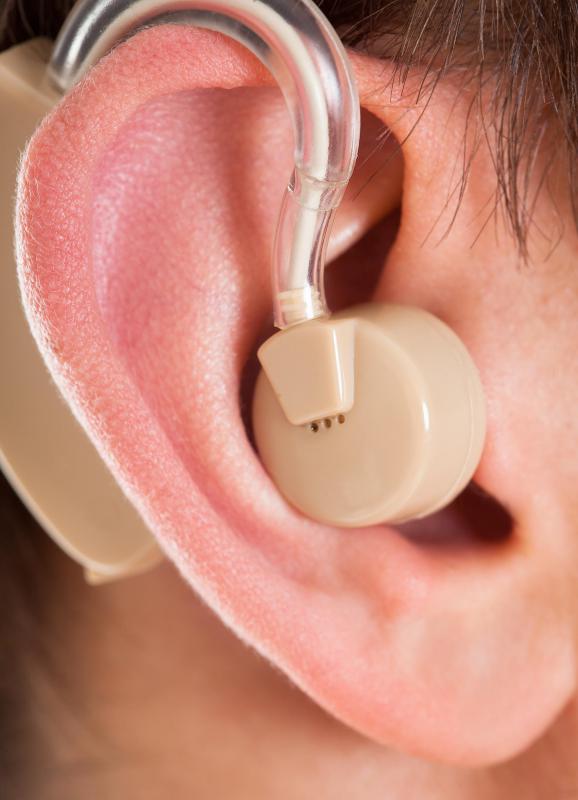At WiseGEEK, we're committed to delivering accurate, trustworthy information. Our expert-authored content is rigorously fact-checked and sourced from credible authorities. Discover how we uphold the highest standards in providing you with reliable knowledge.
What are the Different Types of Hearing Instruments?
Hearing instruments, or hearing aids, are electronic devices that are used to help people who suffer from hearing loss. There are several types of hearing instruments, including behind-the-ear hearing aids, open fit behind-the-ear hearing aids, in-the-ear hearing aids, in-the-canal hearing aids and completely-in-the-canal hearing aids. The main function of all types of hearing instruments is to amplify sound.
In behind-the-ear hearing instruments, the mechanics are stored in a case that fits behind the wearer's ear. The mechanics pick up sound, when then travels down a tube that is attached to an ear mold inserted in the wearer's ear. The sound is then carried to the wearer's eardrum. Though this type of hearing instrument is large, it provides the wearer with better hearing because it can house a large amplifier and battery. These devices are good for all ranges of hearing loss, from mild to profound.

Open fit behind-the-ear hearing instruments are similar, but they are smaller, and the tubing is thinner, making them slightly less noticeable. Instead of an ear mold, a tip or dome that is placed at the end of the tube transfers the sound to the wearer's eardrum, leaving the ear "open" and providing a more natural sound than the standard behind-the-ear instrument. Open fit behind-the-ear instruments can assist with a wide range of hearing loss.

The largest type of hearing instrument are the in-the-ear models, making them easy to operate and allowing for different types of options, including volume control and a telephone switch. A hard plastic case stores the mechanics of the device, which is worn in the outer ear. These are the largest of the hearing instruments, so they are also the most obvious.

In-the-canal hearing instruments fit, appropriately, inside the ear canal. They are smaller than the in-the-ear and behind-the-ear devices, making them less obtrusive. Though they are less noticeable, their size makes them useful only for mild cases of hearing loss, because their size limits the amount of hearing options they can provide, such as volume control and microphones.

The least obvious of all the hearing instruments is the completely-in-the-canal device. The mechanics are stored inside a tiny instrument, which is inserted directly into the canal. The microphone sits directly in the canal, so they provide the most natural form of amplification, but they can be uncomfortable. They are useful for mild to moderate hearing loss.
AS FEATURED ON:
AS FEATURED ON:














Discuss this Article
Post your comments